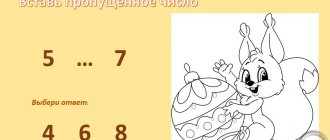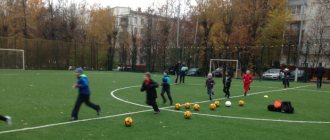In the modern world, young parents no longer adhere to the position that computers and computer games are real evil. Now, more and more often, children are allowed to play various educational games or watch useful and exciting videos. But what exactly to choose from such a wide variety is a much more serious question.
Previously, it was believed that only with cartoons and the right books can one instill good taste in a child, improve his communication skills, vocabulary and other useful qualities. But now this can also be done even with the help of computer games. And all you need to do is choose them correctly. And this most important task falls on the shoulders of parents.
Are computer games useful?
In order to help the child develop, the parent must always be there. So you can’t just turn on your tablet or PC, sit your child in front of it and go about your business for hours. And in case of failure, always criticize the World Wide Web. No, things are a little different. It is important to choose the right games that will help you develop, and you should not forget about parental control so that your child does not accidentally see something forbidden.
Computer didactic game as an effective tool for increasing students’ interest in mastering new knowledge
Children are naturally inquisitive, they want to explore the world, they are able to consider serious issues and put forward original ideas. A computer didactic game will help you use this feature for the benefit of the educational process.
Using didactic games as a teaching method has several advantages. So, on the one hand, a specific didactic task is solved, that is, new material is studied, the material covered is repeated and consolidated, skills and abilities are formed that allow the acquired knowledge to be used in practice. On the other hand, didactic games are aimed at developing such personality qualities as observation, attention, and memory. The development of thinking also occurs, and it is possible to identify the creative inclinations of schoolchildren.
Didactic games also include computer games that are aimed at achieving a specific educational goal. The peculiarity of such a game is the presence of a computer player, who acts not only as the student’s opponent, but is also responsible for simulating the game situation and exercising control over the course of the game.
In order for a computer game to be classified as a didactic software product, its examination is carried out, during which the following areas of the gameplay are assessed:
- the idea of the game. In particular, the ideas, principles and values that underlie the game are assessed, and its goals and objectives are examined;
- ideas about the results, that is, it is necessary to evaluate what educational, developmental and educational effect can be achieved during the game;
- system for evaluating gaming results;
- simulated game situations;
- player behavior modeling.
In addition, when developing criteria for evaluating a didactic computer game, it is necessary to take into account provisions in the field of informatization and software quality management. At the same time, we must take into account that educational and computer technologies are constantly being improved and new methods and forms of gaming activities are emerging. In this regard, the proposed list of criteria is not complete and can be supplemented with other evaluation criteria.
These criteria can also be used as criteria for assessing content and didactically significant components that allow one to evaluate the capabilities of the information technologies used.
These criteria include:
- Playability or motivational component. It is aimed at maintaining the child's interest in the game and attracting his attention to the most important moments of the game. Using this criterion allows us to understand what stimulating effect the game has and how it affects the emotional state of the student.
In general, the game form of presenting material has a number of undoubted advantages:
- The idea of the game itself is attractive to audiences of all ages. And due to the fact that the game contains objects that are understandable to every student and takes into account the age of the children, it is possible to attract almost all students in the class to the game;
- activation of cognitive activity, however, for this, schoolchildren must be given the opportunity to independently manage the game situation and choose the optimal mode of activity;
- creating a favorable psychological atmosphere for accepting new material, since the game process itself contributes to the creation of a positive emotional mood;
- There is an assessment of the player’s actions, which is important for organizing the connection between the gaming environment and the player. With the help of one or another assessment, the player receives information about the correctness and effectiveness of his activities during the game, as a result of which a positive assessment helps to maintain genuine interest in the game itself.
- Content component. The applied indicators of this criterion are aimed at assessing the quality of the components through which the game world is modeled:
- the level of aggressiveness of the gaming environment towards the player. This parameter is needed in order to understand whether the game has any negative impact on the child’s psyche. For this reason, it is necessary that the game does not allow situations that could have a destructive influence;
- The goal of the game should be to achieve specific learning skills and abilities. This is precisely the main difference between a didactic computer game and a classic game, which is created solely for entertainment purposes;
- With the help of gaming material, a specific didactic task must be solved, therefore it is necessary to adequately assess the quality of the material used. It is also necessary to look at the degree of loading of the gaming environment with various game actions and objects, because their number should not affect the achievement of the set educational goals;
- the rules for changing the conditions of the gaming environment must be clear to the player, which will significantly reduce the time required to achieve the designated result. In addition, if the player understands what is required of him, then this contributes to the emergence of positive motivation, and the proposed game material does not cause rejection or rejection in him;
- The player is given clear instructions on the purpose of the game and the conditions upon which the game will be completed. With the help of these instructions, an operational game plan is drawn up, they also determine the player’s ability to understand what else needs to be done to achieve the game goal;
- the expression of educational and gaming actions is carried out in one operation. In a didactic computer game, the expression of educational actions is carried out through game actions. In most cases, they include indicative, informational, controlling and executive components.
- Procedural component. This component includes indicators that are used to characterize the game process and the organization of the player’s interaction with the gaming environment:
- the player has at his disposal the necessary means to change the game environment. This is achieved due to the interactivity of the game and the availability of a choice of several options for the content of the material being studied, as well as the ability to directly influence the game process by changing the parameters of the game environment or by changing individual elements of the game;
- the gaming environment changes in accordance with the command given by the player;
- at any time the user can receive objective information about the current state of the game. This means that the player is provided with detailed information about the number of points scored, the progress of the educational game task, the probable directions of development of further events, as well as the conditions for completing each stage and the entire game as a whole;
- the ability to interrupt the game at any time. This option should be provided in any game, which is required to comply with sanitary and hygienic rules, as well as to prevent the student from developing a gaming addiction;
- the ability to set the pace of events. Using this indicator, the complexity of the game is determined, which, in turn, determines playability and the ability to individualize the learning process;
- recording all user reactions during the game, which allows you to evaluate the level of interactivity of the gaming environment.
- Regulatory component. To evaluate this criterion, a set of indicators is used that regulate the player’s actions:
- the player has the opportunity to familiarize himself with the rules of the game at any time. This option allows you to relieve the player’s psychological tension and exercise control over his actions during the game;
- if there are difficulties, the player can receive the necessary advice. This indicator determines the efficiency of the assistance system;
- During the game, the player can receive the necessary instructions. At the same time, the main task of the help system is to remind, provide advice or lead to the right idea. It is also necessary to provide for the possibility of breaking the game process into several stages, which allows the student to develop the ability to act according to the algorithm;
- the presence of a registration system, which implies the possibility of dividing the game into several stages or the possibility of several people participating in the game at once;
- automatic recording by the system of the point at which the player paused the game. This point allows the student to return to the game to the place from which he exited. In addition, this function allows the teacher to track what stage the student is currently at;
- providing the student with sufficient time to complete all game actions. Therefore, educational computer games are developed in such a way as not to limit the player’s time, and screens are changed only after certain user commands. This approach involves taking into account the time it took the student to complete the entire game.
Basic criteria for assessing the content of didactic computer games
This group of criteria is used to assess the content of the gaming environment and individual gaming objects (the assessment is carried out from the point of view of the didactic value of the objects).
- Pedagogical expediency. The indicators used allow us to assess the possibility of achieving the set educational goals in the process of mastering the content of didactic computer games:
- During the game, the student can apply previously acquired knowledge and skills. The indicator is used to determine the didactic value of the game;
- When game goals are achieved, the set educational goals are simultaneously achieved, which makes it possible to evaluate the level of effectiveness of the game.
- Availability of methodological apparatus. This criterion is used for competent organization of the learning process using didactic computer games:
- availability of methodological recommendations. The indicator is used to assess the quality of the game, since it is important for both teachers and parents to have objective information about the limits of applicability of a didactic computer game;
- completeness and accessibility of teaching materials.
- The emotional intensity of the game. The criterion is used to characterize various aspects of the game related to the emotional experiences of students:
- the game does not contain harshness, violence and complies with moral and ethical principles;
- The player's loss can only be explained by the fact that he did not fully understand the game. Therefore, the game does not allow the creation of situations where the player may need new knowledge. At the same time, the player must be confident that he can cope with all the tasks offered in the game;
- using a variety of options for demonstrating “right/wrong” reactions.
- Achieving the intended training effect:
- the game must correspond to the topics being studied within the school curriculum. At the same time, it should be possible to simulate the same situation in different ways;
- a didactic computer game should ensure that children develop the ability to make the optimal decision in a certain situation, as well as ensure the development of thinking;
- through a game task, a didactic task is set;
- children’s play actions are determined by play and didactic tasks, as a result of which the game allows them to divert children’s attention from solving the main educational task;
- the presence of feedback, which presupposes that the student has the opportunity to independently assess the correctness of his actions and exercise control over them;
- the game involves the student using only the knowledge that he previously acquired while studying the school curriculum;
- The content of the game has a four-component structure, including indicative, informational, controlling and performing components.
- Game interactivity. This criterion includes indicators that characterize the level of independence of the player during his contact with the game:
- the ability to influence the gameplay by changing individual elements and parameters of the gaming environment;
- the ability to organize direct control of the actions of game characters.
The use of computer didactic games in the educational process helps to create conditions for the development of positive motivation for educational activities, the manifestation of conscious interest in educational activities, and is an incentive for the development of new knowledge.
Literature.
- Abdulmenova Z.Z. Play is a way to develop inquisitiveness and curiosity // Primary school. 2003. No. 11
- Amonashvili Sh.A. Development of cognitive activity of students in elementary school. / Questions of psychology. - 1984. - No. 5. - P.36-40.
- Belavina I.G. Child’s perception of the computer and computer games // Question of psychology. – 1993. – No. 3.
- Gramolin V.V. Educational computer games // Computer science and education. – 1994. – No. 4.
- Markova A.K. Formation of learning motivation at school age: A manual for teachers. – M.: Education, 1983.
- Mironova R.M. Play in child development. — Minsk, 1989
- Sidenko A. Game approach to teaching // Public education. 2000, No. 8 – 352 p.
- Elkonin D.B. Psychology of the game. – M.: Pedagogy, 1978.
Special studies were carried out, from which the following conclusions were made:
- a child who plays computer games becomes more attentive and focused in life, which helps in the future while studying - to listen and remember more information;
- various puzzles, quests and other tasks develop logic and the ability to multitask;
- fine motor skills return to normal thanks to working with the keyboard and manipulator;
- with each new level, the child learns to analyze its complexity, and then this will help to correctly assess his opportunities in life, which, in turn, will also help in self-development;
- to relieve some nervous tension, you can choose games with elements of restrained aggression, but parents should pay more attention to them, and first choose them yourself;
- in a computer game there are no restrictions for fantasies and even for actions; this helps in developing one’s horizons and knowledge of the world around us.

Of course, there are also negative sides to computer games, since everything cannot be so bright and beautiful. Sitting in front of a PC for long periods of time puts a lot of strain on your eyes. And sometimes the child does not want to do anything else. In the game he is forgotten and disconnected from reality, which in turn minimizes contacts with people.
But, all these disadvantages can be easily smoothed out by parents if they monitor their child, and not just turn on the tablet for him, every time just so that he “does not get in the way.” In addition, there are many different computer entertainments where parents can play with their child.
Games for children are divided into categories depending on the topic and focus.
And if we talk about children of preschool or school age, then there is a list of the best computer games for development.
1.2. The influence of a computer game on the development of a preschooler.
Existing computer programs can help children develop memory, attention, learn something new about the world around them, introduce letters and much more.
Computer games will help develop many skills, but at a certain point, when the child has already mastered the toy, he begins to perceive this activity as entertainment. Play ceases to be an element of development, since the child does not acquire new skills. But any game, in addition to having fun, should teach something. By watching a child play, an adult will be able to understand when it is necessary to change a game that is entertaining to a game that develops.
By playing computer games, a child learns to plan, build the logic of elements of specific events and ideas, and develops the ability to predict the outcome of actions. He begins to think before he acts. Objectively, all this means the beginning of mastering the basics of theoretical thinking, which is an important point and condition in preparing children for school. The educational function of computer games is one of its most important characteristics.
Computer games are designed in such a way that the process of mastering them encourages the child to engage in research activities without noticing it at all: try, get information, clarify, draw conclusions, adjust their actions in accordance with the current situation. This can best be achieved if adults are aware of the problems facing the child at play and solve them together with him. Joint discussion and solution of these problems can become the first manifestation of the child’s research activity. Computer games teach you to do this quite quickly, and success in mastering game programs
in preschool age will help to master school programs in computer science (V. Motorin).
Properly selected game programs that correspond to age, temperament, educational orientation, and take into account the child’s inclinations will help to effectively apply them for the purpose of education and development. Games with research content are of greatest interest.
If game programs are selected incorrectly, interests may be crowded out: the child may completely withdraw into the virtual world.
Computer games for preschool children
To interest a child, the game must be active, understandable and colorful. Let's look at some of the most successful examples.
"Masha and the Bear" from AppQuiz

This is an application with interesting content for preschool and even school-age children. There is a whole block of different games with these characters:
- drawings;
- coloring books;
- choice of words;
- selection of objects by shape;
- puzzles;
- learning musical instruments;
- mathematics.
Separately, you can choose to study numbers, first mathematical problems, various figures from geometry, etc.
Puzzle “Masha and the Bear on a walk”

When you start, a picture appears on the screen, which you need to assemble from puzzles by dragging them from the right side to the desired place.
Angry Birds: Match 3
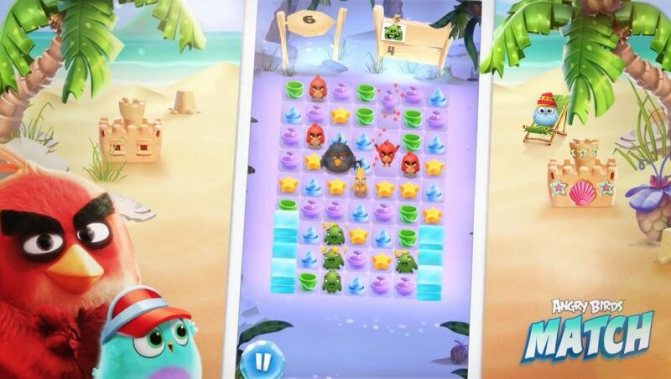
Everything here is very friendly and calm. All you need to do during the game is to collect three identical birds together in one row in any direction.
"Drawing"
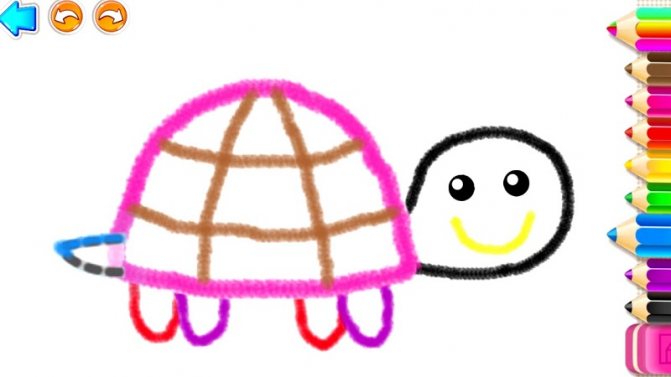
Risovalka is an animated game for children aged 2 years and older. After the drawing is completed, the character comes to life, jumping on the screen, laughing or even flying. 30 characters and more than 100 animations and sounds are collected here. You can optionally save the drawing.
"Animal Sounds"
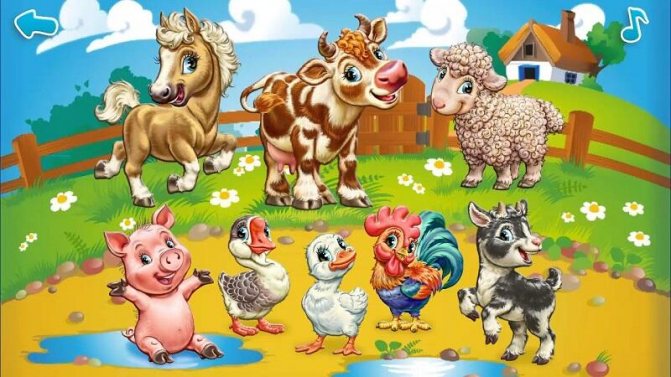
“Animal Sounds” is a convenient application that you can always take with you, since after installation it does not require a network. More than 30 sounds of birds, animals and insects are collected here for study. And in order to hear each of them, you need to click on the appropriate image.
"Fixies"
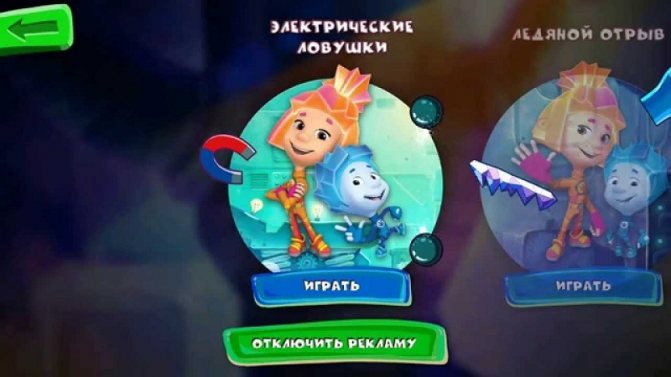
Favorite cartoon characters Simka and Nolik help you learn how different equipment works in the house, what different musical instruments sound like, and how to care for your pets. And then, as a test, you need to go through a quest with various tasks, guessing games, fixies, etc. “Fixies” is a memory development game, it requires the child to first remember the sequence of the character’s actions, and then repeat it in the correct order.
"Safety on the road"
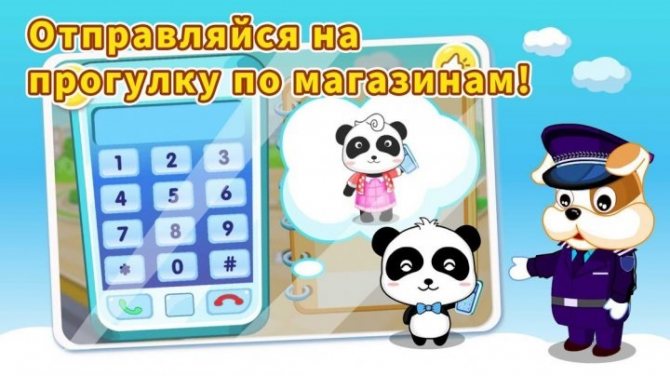
A game called “Safety on the Road” will allow the child to learn how to behave correctly on the road, what to do in a given situation. There are also various tasks that will need to be completed later.
Of course, this is only a part of the interesting educational computer games for preschool children. All of them are aimed at development and are created to help the child learn more about the world around him. There are also separate games for learning the alphabet, numbers, first words, color names, etc.
2.1. Basic principles of sequential presentation of computer programs
The success of using a new unique tool - a personal computer - at the primary level of education depends on many conditions. One of the conditions for presenting computer games to children is to take into account gradually more complex developmental tasks. In computer games for preschoolers, there are three types of tasks:
1. gaming;
2. didactic;
3. computer control task.
When planning long-term educational work with children, it is necessary to take into account the gradual increase in complexity of all three types of tasks:
1. the first - leading for preschoolers, is associated with the formation of the game;
2. second - with the assimilation of traditional knowledge and skills;
3. third - with the formation of a generalized ability to control various situations on the display using a keyboard, mouse and joystick manipulators, and other controls.
This non-traditional task for preschool and primary school age is associated with the special impact of the computer on the general mental development of children
When compiling the sequences in which programs are presented to children, the basic principle of didactics is taken into account - from simple to complex - so that children do not lose interest in computer games. And this can happen if you give very simple games (uninteresting), if you give the same game (boring), if you give children very complex games, self-doubt appears.
In addition, the general educational program of the preschool institution and the adopted annual, monthly and weekly plans are taken into account.
Games for schoolchildren
School-age children will not be interested in all this, since they have already known all this for a long time. For them, you can choose something suitable for their age and level. You should choose in such a way as to help you develop further, and not just have fun.
Lego
“Lego My City” or “Lego City Undercover” is probably the number one game for most boys and girls over 7 years old. In this game, created based on the designer, you can complete various quests and solve problems. Also, with the help of such a game, the child gets to know the computer better.
"FIRE"

"FIRE" is a game that is based on the Stone Age, where one of the tribe members was unable to keep the fire going while everyone else was sleeping, and for this he was kicked out of the community. Now he faces tests that come with hints.
"Disneyland Adventures"
“Disneyland Adventures” is a whole virtual tour in this famous park, which you can go to with your parents. There are many exciting attractions, various quests, and characters to choose from.
"Guys and animals: let's play together"
With this game you can learn many interesting facts about your pet, as well as the secrets of caring for it, its nutrition and needs. With this game, the child learns to take care of his pet independently, under the supervision of his parents.
"Cuphead"
Cuphead is a great 2D run and gun platform game. Stylization is focused on the 30s. Interesting graphics with the ability to customize the hero the way the player wants. At the beginning of the game, you can learn the main movements and abilities of your character, and then play with your friends in pairs.
"Lego Star Wars: The Force Awakens"
The game is based on the events taking place in the last part of Star Wars. It is based on the main parts of films such as “Harry Potter”, “The Lord of the Rings”, “Indiana Jones”, etc. In the game, the character fights bad guys while traveling, and in the process destroys the entire city built from Lego. . Can be played by two players at once.
"Minecraft"
“Minecraft” is an exciting game not only for schoolchildren, but also for many adults. This is a real pixel sandbox where you can build houses, cities, and even create new entertainment. Each player has two modes: survival (natural resources are collected that help protect against monsters), and sandbox, where you can create whatever “comes to mind.”
"Journey"
There is no clear goal to be achieved here. The player can get a sense of adventure, or uncover the secrets that exist on the big mountain.
"Rocket League"
Rocket League is a game with a real competitive spirit. The participant plays football, but not with his feet, but with the help of cars. He can control many cars at once to achieve his main goal: to score a big goal for the opposing team.
"Unravel"
"Unravel" is an interesting game with a lot of puzzles, where the main character is Yarny, who is made of yarn. Objective: to help the grandmother who made it regain her memories. This means that the game will be built as a journey through the amazing landscapes of northern Sweden.
"Child of Light"
"Child of Light" is an exciting game with an alternative universe. Events take place in Austria in a fictional world called Lemuria. The player takes on the role of the young princess Aurora, who is going to fight the Queen of the Night, since the villainess has stolen the Moon, stars, and the Sun. A fascinating journey through the watercolor world and characters with their speeches in verse will seem interesting to many children of different ages.
"Forza Horizon 3"

Forza Horizon 3 is a great game that consists of racing supercars on real tracks. There are options that make it possible to tune your car, as well as select your favorite vehicle from a huge fleet of more than 350 cars.
RollerCoaster Tycoon 3
This is a cool addition that is made in the style of a construction stimulator. Here you can create your own city, create whatever infrastructure you want: a skating rink, where you can then skate, or, for example, a zoo with unusual animals.
"Portal"
In the story, a girl works in a laboratory, and she is alone on the planet. Then she began to hear other people's voices. They sounded from an artificial intelligence that she herself created. He gives her tasks that the scientist must complete.
"Patchwork. Alice's Adventures"
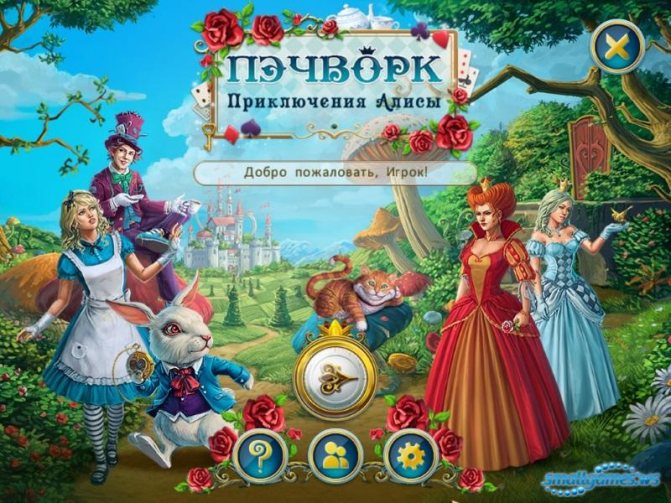
This is a game that will help you not only learn the details of the book better, but also see Wonderland. The player must help Alice get the throne of the Queen of the fairy-tale world, but before doing this, you need to go through many different tests across the levels.
A large number of educational computer games help each child choose exactly what he needs in order to develop his character traits, improve his skills and knowledge. Such games are created not only for entertainment, but for benefit.
Of course, it will be most convenient for a child to play either on a smartphone or on a tablet. So even with modern gadgets, a child of any age can engage in useful tasks.
Parents should be careful about what exactly their children are doing on the Internet. It’s better to turn off the Internet altogether if the game can be downloaded and has an offline mode. In addition, do not forget to enable parental controls.
What games would you prefer for your child, or maybe you really missed in your childhood? Write in the comments about your impressions of modern educational games for children.
Board games
No matter how beneficial computer games may be, your child’s time on gadgets should be monitored. Board games can be a worthy alternative - no less colorful and exciting. If you choose the right boards, not only children, but also adults will get carried away.
CASH FLOW
Subjects studied: social studies, mathematics, economics.
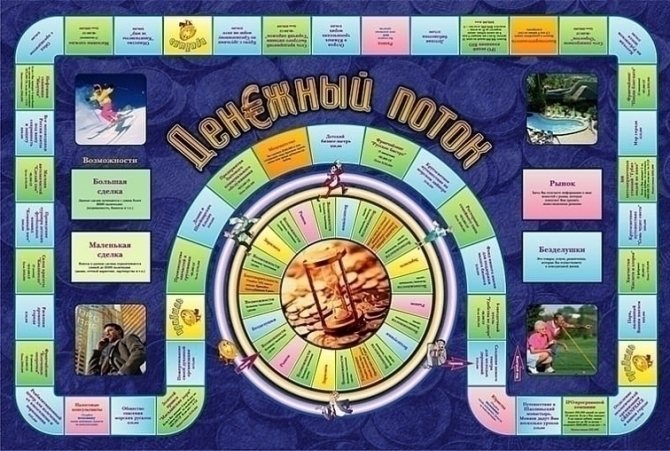
At the beginning of the game, each participant receives a profession, information about necessary expenses and money for the first time. In the process, players build a business, make investments and make mandatory payments. You have to plan a budget, make decisions and do quick math in your head. The game promotes the development of useful skills and teaches the basics of business.
ZEUS ON VACATION
Subject studied: mathematics.
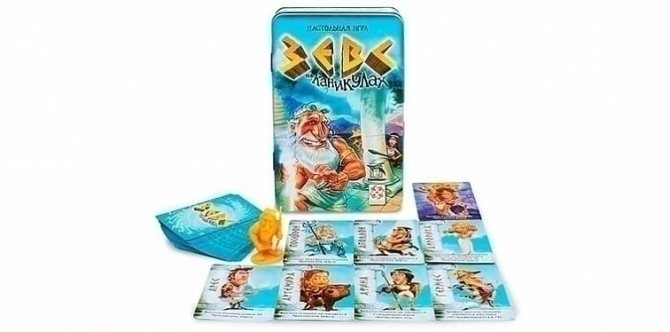
At the beginning of the game, participants place a stack of cards in the center of the table - Olympus. Players take turns adding a card to the deck while solving a math problem. Sometimes you need to add 10, and sometimes you come across a more difficult task, for example, rounding the current mark to the nearest multiple of 10. You have to quickly count in your head, be attentive and resourceful. A great game for a group of friends.
TIMELINE HISTORY OF RUSSIA
Subject studied: history.

The game consists of cards with dates of historical events from the emergence of Rus' to the present. When making a move, players must answer the question of what happened before or after this event. The cards are laid out on the time axis. A great way to recap key dates with friends.
CORTEX
Competitions in logic, mental arithmetic, knowledge and reaction speed. The game consists of cards with different tasks. The players lay out the first card, and everyone begins to think about the answer. Whoever guesses first covers the card with his hand and voices his version. The one who gives the most correct answers wins.
IHNIY IHNIEVICH
Subject studied: Russian language.

Learning Russian is difficult and quite boring. A colorful game will make the task easier for schoolchildren. The game consists of three sets of cards with different difficulty levels. You can use everything at the same time or select the desired level. Some of the cards depict a funny character and a term from the Russian language. On the other side are printed sentences or phrases. While making moves, participants repeat the basics of the subject in a fun and relaxed manner.
